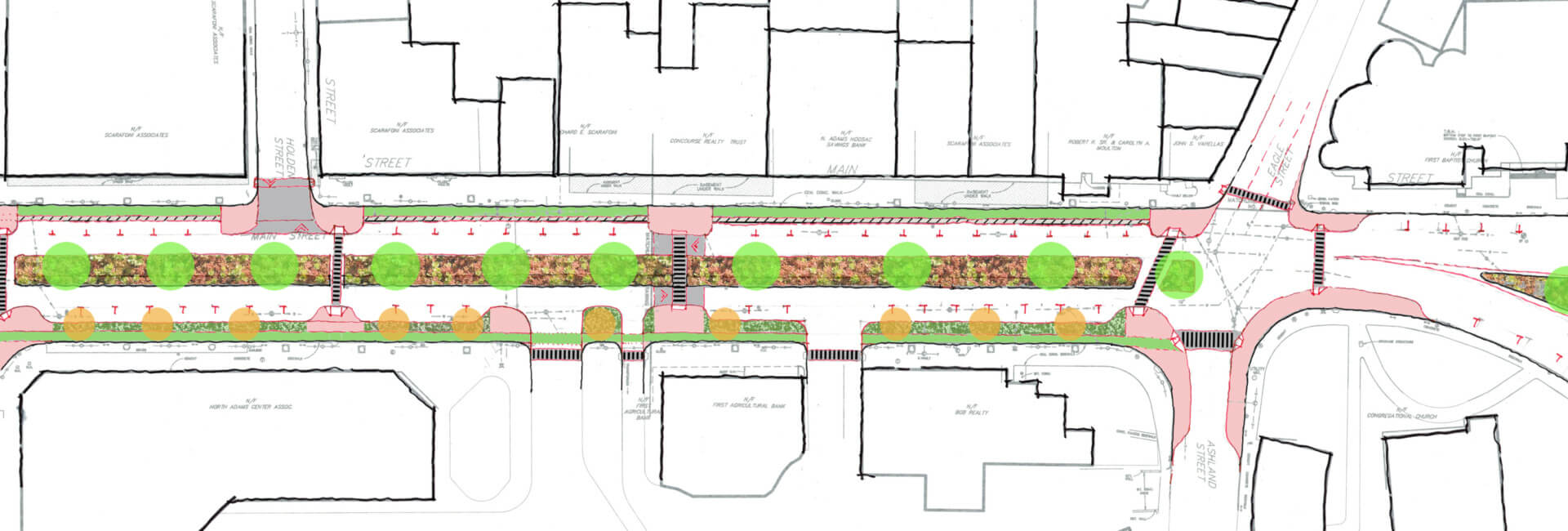I have looked forward to participating in the MLK Day of Service for two years now. This process is dedicated to working within a community and developing an immediate plan of action. This Day of Service focuses on understanding a community’s greatest need and providing options at many scales to immediately combat a need and solve a problem. As designers and architects, the essence of our practice is service and problem solving to improve a situation. MLK Day is an opportunity to iterate and create proposals quickly. The nature of this quick timeline allows us to dive into the core problem and work as a team both within the office and with our partners. The complexity of many of our projects requires years of iterating, meeting, collaborating and adjusting. These proposals are a chance to step back and reflect on the essence of our goals and quickly study a best course of action.
This year, our team was fortunate to work with the North Adams Chamber of Commerce through the NAMAzing initiative. North Adams has been a part of PAYETTE’s MLK Day of Service for three different years. Each design study builds upon the previous proposals for community development and this year we examined the unique scalar distribution of the Main Street in downtown North Adams.
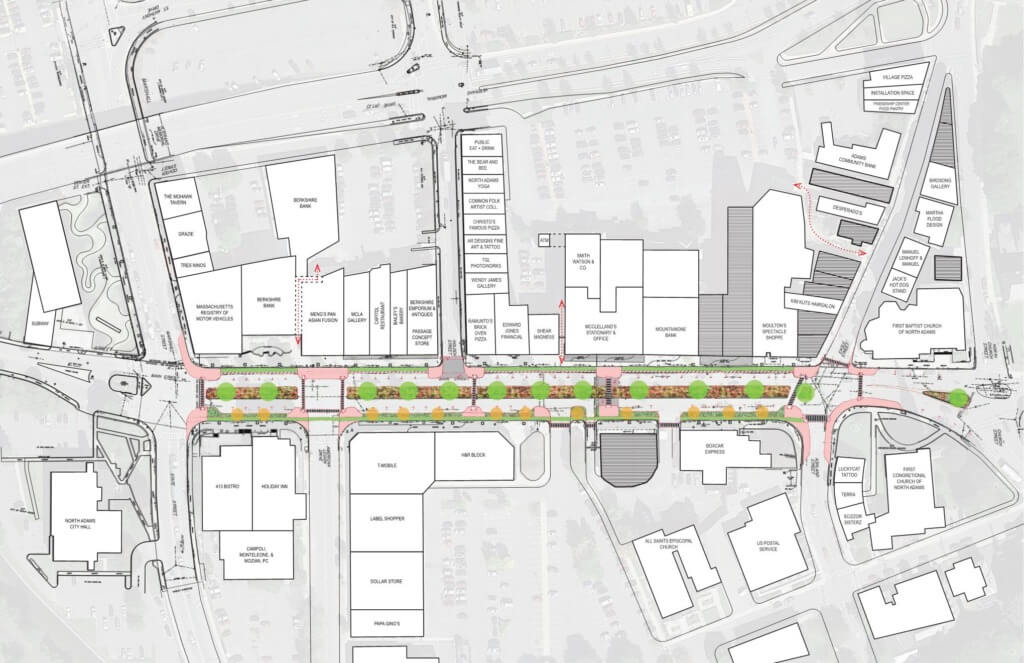
Downtown North Adams has the potential to be a center for the community to foster arts, commerce, social engagement and healthy living. Main Street is the heart of downtown North Adams. Book-ended by State Street (which leads to MASS MoCA) and Church Street (where the town’s iconic churches are located), Main Street needs aesthetic and functional improvements. To support its small business community, it is important for Main Street to draw in visitors and new residents while connecting the arts community and historic aspects of downtown. Many of these small businesses have been impacted by the COVID-19 pandemic and demonstrate a need for alternative seating, access and safe event spaces. Moving Main Street Forward aims to envision the possible future improvements and intervention for this historic center while also seeking to improve the small business community’s accessibility to encourage future economic growth.
Currently, Main Street does not prioritize pedestrian or bike safety or accessibility. The scale and distribution of traffic (a four-lane roadway) and parking creates an uninviting means to meander through the downtown at the pedestrian scale and experience. The proximity to the Appalachian and Mohawk trails also encourages bike traffic, however the organization of parking and traffic discourages bicyclists. The proposed design improvements center around prioritizing safe navigation and accessibility for visitors and residents traveling by all modes of transportation. By creating more opportunities for visitors and the community to access downtown safely, economic development will be able to grow by way of commercial commerce.
Both issues also contribute to the limitation of social engagement opportunities and negatively impact the visitor experience. The historic mill town of North Adams has mindfully reinvented itself as a hub for cultural activity and innovation. The physical center of this community should reflect the vibrant and enthusiastic community. As the city continues to grow and develop, the downtown must organize itself to be more welcoming.
Environmentally, Main Street has limited green scape which has led to runoff issues that cause Main Street and other neighboring streets to flood regularly. Environmental resiliency, already listed as a priority within the community’s goals, encouraged us to examine the positive implications of introducing landscaping at meaningful points throughout the downtown. Our proposed solutions seek to improve storm water runoff, the reduction of the heat island effect, as well as to contribute to the beautification of the street.
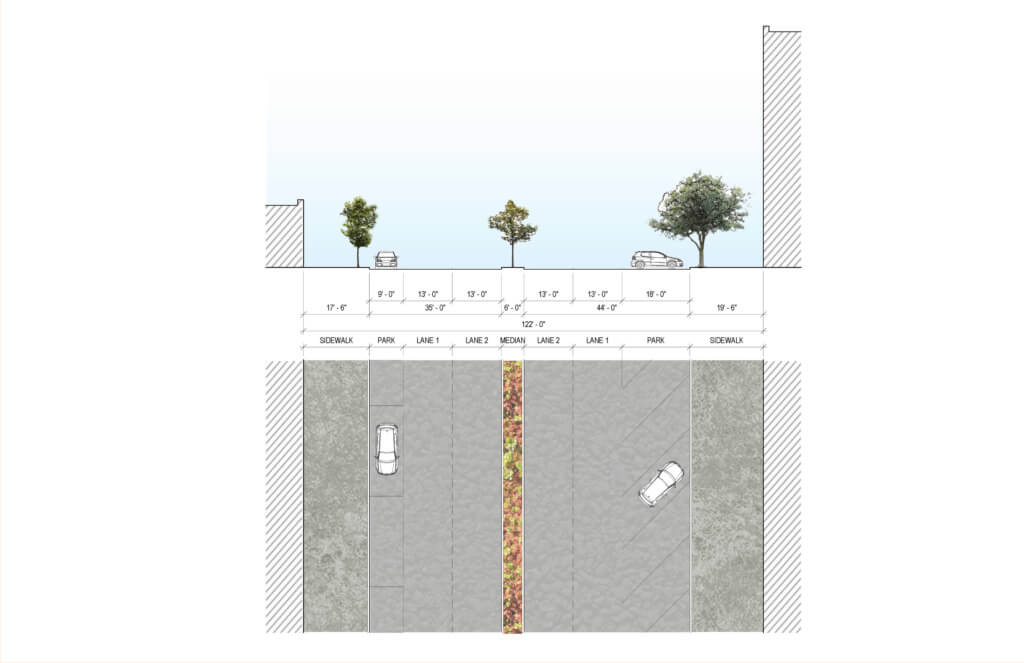
As described above, the current configuration has too many traffic lanes and angled parking is dangerous to bicyclists. Our design proposal breaks down the development into multiple steps organized by intervention and complexity. The first step introduces safety measures, addressing environmental and pedestrian concerns immediately. The final step more dramatically prioritizes pedestrian experience and has the greatest impact to the distribution of traffic and mitigating the scalar challenges in place.
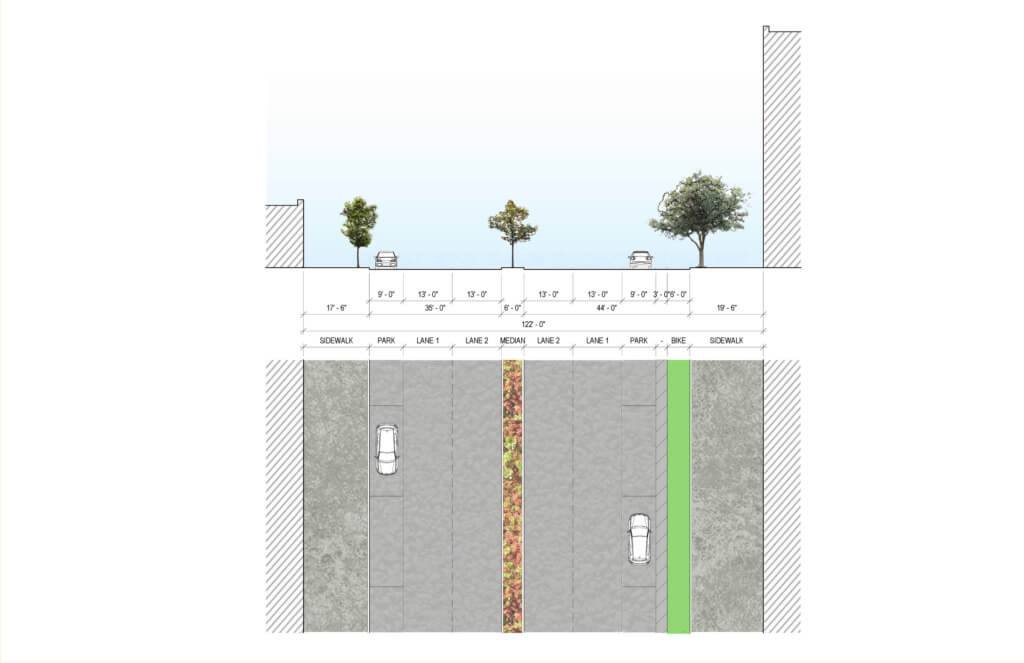
The first step of the design proposal reorients parking on both sides of the street to be parallel. This addresses the immediate safety concern for bicyclists and preserves parking for visitors and the community. Furnishings can be added to unused parking spots or proposed protected zones. These encourage space to rest and gather while also providing more opportunity to benefit local commerce. The FoLD barriers, developed by PAYETTE, study the organization of space and the opportunities to engage in an artful and functional way with the street and sidewalk. This first step only requires paint and other furniture items can be moved around as events necessitate locations and demand. This intervention has the smallest construction impact and quickest turnaround.
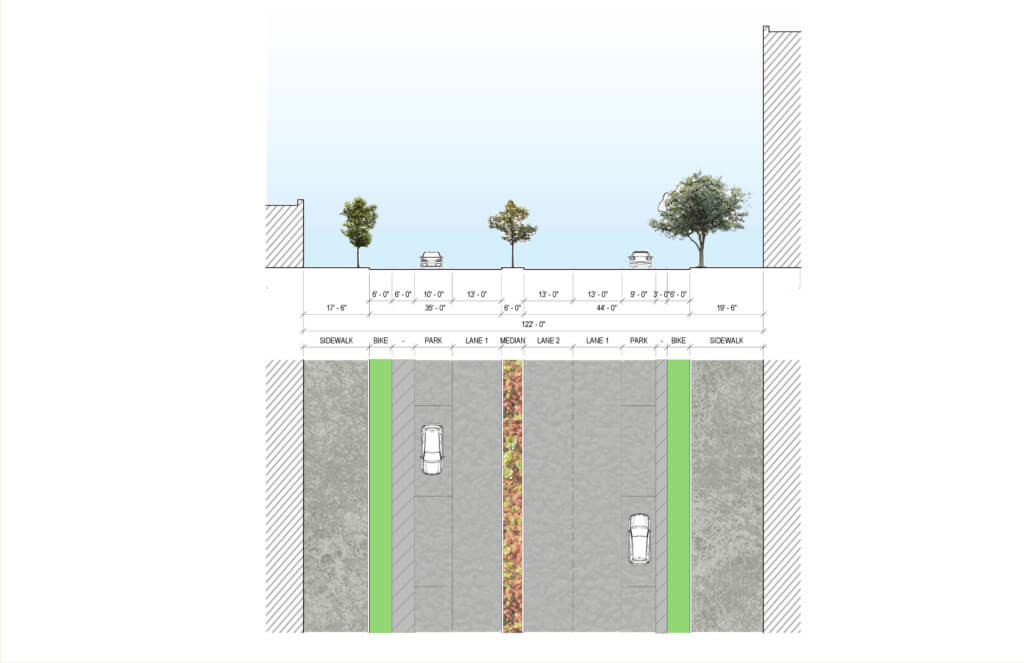
Step two reduces traffic to one lane along the south side of the street. This allows a protected bike lane to be installed on both sides of the street while preserving parking counts and limited disruption to the street. Traffic calming is a strategic method to prioritize the safety of pedestrians. This also introduces an opportunity to add color by painting the crosswalk or curb with bright colors, enlivening the street. The bike lane supports the existing accessibility and sustainability goals of the community and reduces the intimidating scale of the street. Here the intensity of improvement is increased by the rearrangement and addition of a traffic lane.

The third step reduces traffic to one lane on either side of the street and expands the median to prioritize pedestrian and bike traffic. This intervention involves introducing more pedestrian crosswalks and significantly reduces concerns about flooding and runoff through green design management. Planting methods, like bioswales, within the buffer zone and median could replace the degrading concrete on Main Street, add color and limit the heat island effect in the summer. This final step requires curbing demolition and reinstallation and is the most intensive construction process. However, the reward is greatest through the ability to integrate the arts community by distributing display sculptures at various points within the median and mitigating environmental impacts of events like flooding. This visually reflects the culture and priorities of the community while creating a more welcoming space for people to move through Main Street.
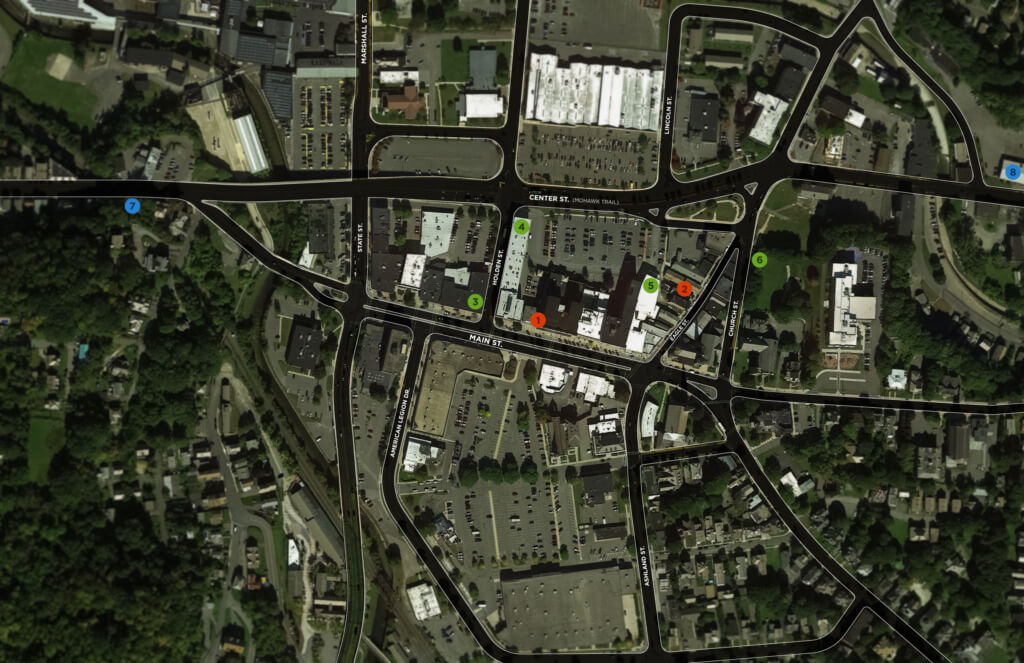
Additional steps to create a more friendly and accessible downtown design strategy can be the introduction and improvement of wayfinding methods. Signage can improve the intuitive organization of street traffic, parking organization and commerce locations making the street more friendly to visitors. Alley improvements can create a visual connectivity between public parking adjacent to main street while wayfinding murals can help vehicular traffic safely navigate to desired destinations. Roadside murals also reinvigorate blank building surfaces and introduce artistic approaches to reinvigorating the downtown network.
Each step and proposal introduce more safety precautions and preparations while improving traffic organization and runoff management. Each of these interventions carefully addresses the community’s concerns and the combination of all of these provides a system to address them overtime and reduce the impact that construction could have on the short term. This year’s MLK Day of Service allowed us to engage with innovative community leaders and develop solutions to contribute to the organization and development of downtown North Adams for years to come. I look forward to seeing how the community embraces these proposals and continues to establish their identity as a cultural hub.
TEAM MEMBERS
North Adams Chamber of Commerce / NAMAzing Initiative
PAYETTE:
Allison Trittschuh
Andrea Love
Haipeng Zhu
Mark Scott
Max Frank
Melissa Allen
Shreeya Shakya
RELATED CONTENT
